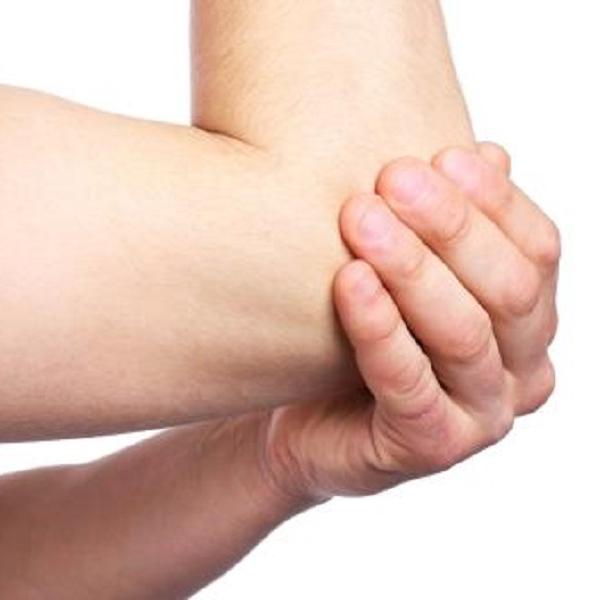
If you’re on the court, or at the greens, you may hear the terms “tennis elbow” or “golfer’s elbow.” However, you don’t have to play these sports to suffer these common overuse injuries. This inflammatory process affects the large tendons that attach the forearm muscles to the bony prominence of the elbow. Pain usually increases with gripping, pushing/pulling and lifting (especially palm down).
We called on one of our occupational therapists, Todd Cobler, to learn more about these conditions that he often treats at the ATI Hand Therapy Clinic in Carol Stream, IL.
Tennis Elbow vs. Golfer's Elbow
Tennis elbow, known as lateral epicondylitis, involves inflammation at the insertion point of the tendon at the outer portion of the humerus bone at the elbow joint (the epicondyle). Tennis backhand requires a lot of exertion from the wrist extensors and when tired, strain eventually occurs at the elbow where the tendon attaches to the bone. Most people with lateral epicondylitis, however, acquire it from activities other than playing tennis.
In contrast, when the tendon that attaches at the inner portion of the elbow is inflamed, the condition known as medial epicondylitis is referred to as “golfers elbow.” Golfers commonly injure this area after striking the ground to take a deep divot.
Preventing Golfer's or Tennis Elbow
“Like most overuse injuries, many people don’t know they are overusing an area of their body until it is overused,” says Todd. “However, there are ways to prevent these types of injures.”
As it relates to the sports of tennis and golf, players can benefit from lessons teaching proper gripping and hitting techniques. With daily overuse injuries, pay particular attention to your body and what it is telling you.
“If you have constant aching or fatigue in your forearm with the activity that you are doing, you need to stop, take breaks and know the proper ways to stretch out your forearm to keep various forearm muscles loose,” adds Todd. “A tight muscle is an inefficient muscle, which makes it susceptible to strain within the tissues.”
Treatment Options for Golfer's Elbow and Tennis Elbow
Someone dealing with these symptoms should consult with a physician first. Based on the patient’s report, the physician may consider options such as splinting, medication, referral to occupational/physical therapy, and rest and temporary leave from work. According to Todd, these two conditions can be difficult to treat unless the patient is completely removed from the environment that has caused this overuse strain.
“If a patient comes into therapy and has the luxury of being off work, or can stop the activity that caused the injury, it is much easier to treat, and the prognosis is much more favorable,” says Todd. “I often incorporate Active Release Technique (ART) to treat these two diagnoses, and it has been very successful.”
Tennis and Golfer's Elbow Treatment at ATI
If you’re feeling aches and pains in your elbow, ATI can screen your injury and provide suggestions or recommendations for further care if appropriate. Injury screenings are provided by a licensed provider, however are not inclusive of a comprehensive physical therapy evaluation or treatment. Find a clinic near you by visiting www.ATIpt.com or call 1-855-MY-ATIPT to schedule your complimentary injury screening.
